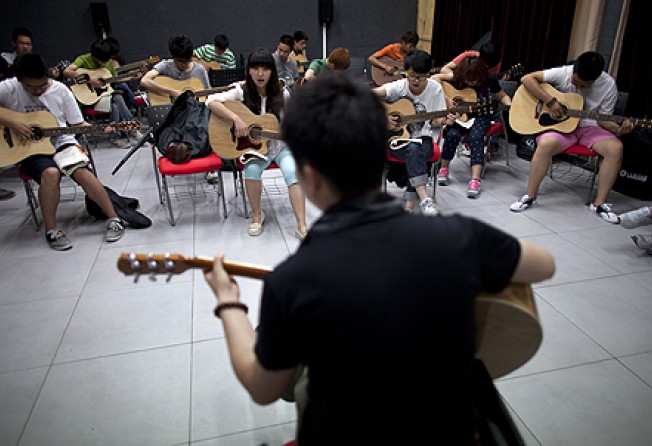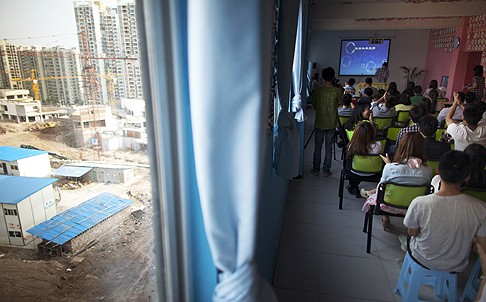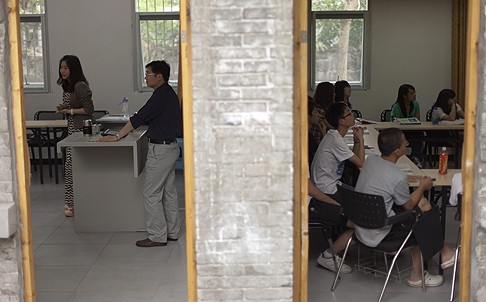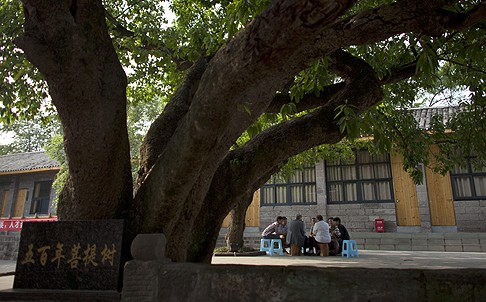No more rote learning, Chinese university ventures into broad-based education

On the outskirts of this sprawling megalopolis of 29 million in southwest China stand a pair of college campuses – one representing education’s past in the world’s most populous country, and the other, perhaps, its future.
In its mission and dreary name, the College of Mobile Telecommunications is typical of China’s hundreds of Soviet-era universities: rote learning, hyper-specialisation and a lock-step course of study for all.
On a hill above it, surrounding a secluded courtyard, stands Yuanjing Academy, a new experiment with a very different feel. Here, university students take a broad array of subjects their first year, in small classes, learning to do things like argue about literature and play the guitar.
“We are adults,” says Zhang Panyu, an 18-year-old student whose reading of Jane Eyre helped him navigate his own first romance. “We need to know something about everything.”
The Great Recession began in late 2007 with the near-collapse of the global financial system, depressing economies and employment worldwide. It also drove millions more than ever before to seek higher education. Global enrolment is closing in on 200 million, after passing 100 million barely a decade ago.
Yuanjing shows how countries are drawing lessons from recent economic history about what to study and what kind of knowledge will drive future economic growth.
Elsewhere in the world, there is a growing emphasis on broader learning as an economic necessity.
In Europe, where for centuries students have jumped straight into specialised fields and studied little else, recent changes have pushed back specialisation, making more room for general education. In Africa and the Middle East, experiments are moving away from a relentlessly narrow education tradition. And on a much bigger scale, China is breaking down the rigid disciplinary walls that have long characterised its higher education system.
The trend is far from universal; many countries remain urgently focused on narrow skills and job-training.
But advocates in a broad range of places around the world hear employers demanding the “soft skills” – communication, critical thinking and working with diverse groups – that broad-based learning more effectively instils. These advocates argue their countries need job-creators, not just job-fillers. They think the biggest innovations come from well-rounded graduates – from empathetic engineers, say, or tech-savvy anthropologists.
There’s “a weird symmetry” at work in the educational world, says Columbia University professor Andrew Delbanco, author of College: What it Was, Is, and Should Be.
As people in the United States “talk less and less about the value of liberal education”, he says, “our so-called economic competitors talk about it more and more.”
In its once tightly planned economy, China’s universities churned out graduates for specific lines of work. Universities often were overseen by a national ministry or trade agency. Their names say it all: Chongqing Nanfang Translators College, Nanjing Audit University, North China Electric Power University.
Yuanjing founder Peng Hongbin excelled in that system, studying at a prestigious university and, after a government job, later getting rich in the flooring business. But he doesn’t credit his education for his success: under the rote learning style he never learned to speak up.
“China does not teach you how to communicate,” says Peng, who in 2007 bought the telecommunications college when it went private and, five years later, founded Yuanjing on the hill above it.
Now, he’s a leader in an effort to bring broader-based, liberal-arts style learning to China’s education system.
China does not teach you how to communicate
His academy picks 150 students from the freshman class of 5,000 at the telecommunications college, which also is undergoing changes, adding clubs, sports, community service and art appreciation.
“For a country to innovate, to be creative, it needs imagination, not a knowledge and know-how from a specific field of study,” he says.
His advisers include a Dutch academic named Hans Adriaansens, who on a recent sunny afternoon sat in the checkered shadow of a traditional Buddhist “Bodhi” tree of wisdom on the Yuanjing’s campus, talking to students about their ambitions, work and daily worries.
Adriaansens’ journey is a kind of microcosm of the global movement. Decades ago he studied at American campuses including Harvard and Smith College, falling in love with liberal arts learning. He struggled for decades to bring the model to Europe, where students historically have been channeled into specialties as early as age 12.
“When I started, everybody was against it, even at my own university,” he says.
But in recent years, he’s helped leading Dutch universities install liberal arts colleges within their campuses. Now, Europe-wide changes he’s encouraged have opened space during the first years of higher education for broader learning, delaying specialization. Singapore and Hong Kong have made similar moves.
Elite Saint Petersburg State University in Russia recently opened its first liberal arts faculty, and there are similar projects in Poland, Slovakia and even Germany, which invented the rigid disciplinary model. Jonathan Becker, the vice president for international affairs at Bard College in New York who has worked in Europe for decades, says it’s no accident that the Saint Petersburg effort has been led by a former Russian finance minister.
“They realise,” Becker says, that “narrow boundaries of disciplines are not the answer to modern world problems”.
Not every country is embracing the trend. In much of the world, facing cripplingly high youth unemployment, broad-based or liberal-style learning is still viewed as an unaffordable luxury. India’s development efforts are focused on vocational training for 500 million people by 2022. Turkey is rapidly expanding vocational training, while Rwanda is focused on information technology, agriculture and tourism.
Still, from Morocco to Saudi Arabia to Malaysia, experiments in broader-based learning are expanding. And China is the movement’s promised land. Leaders may not have fully considered the potential political implications of liberal education, but they’ve endorsed the economic case. They want China to invent the next iPad, not build the last one.
Change is apparent not just at experiments like Yuanjing but across China’s big public universities. Hangzhou’s Zhejiang University in eastern China, for example, has reduced the number of majors from more than 200 to seven general directions.
“It’s new to them but, to my surprise, it’s going much faster than it went in my country,” says Adriaansens.
There is no suggestion that the Chinese system yet resembles the traditional American one, or will soon.
“The 12 years of education has not given our students the habit of thinking,” says Bai Fengshan, who is leading a new liberal arts curriculum at prestigious Tsinghua University, traditionally known for technology and engineering. “They simply take whatever is given. They can tell when what’s given is bad, but they don’t know why.”
Students “lack the ability to be critical”, he says, “which is different from the ability to criticise.”
He is committed to the transition.
“When a person leaves the university,” he says, “he or she should be a whole person.”


